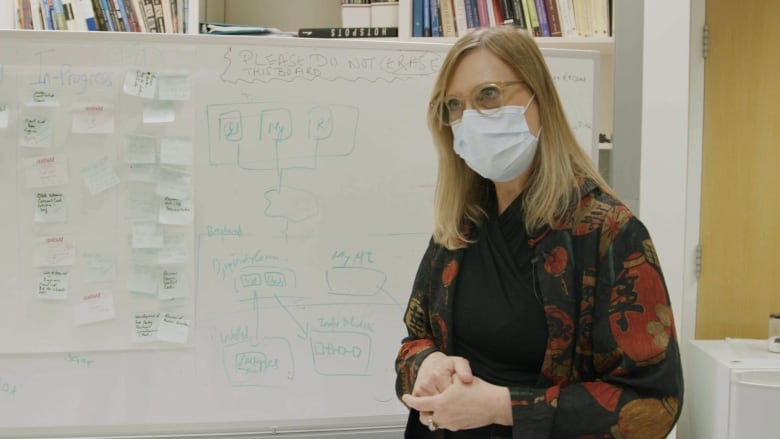How the technology that powers crypto is used for more than money
From powering cryptocurrencies like bitcoin to digital assets like non-fungible tokens (NFTs), it seems blockchain technology is everywhere.
Blockchain is a decentralized digital ledger that stores and records data, and is best known for facilitating transactions for digital currencies such as bitcoin.
Many people also hope to become wealthy by investing in digital assets such as GIFs and artwork, some of which sell for millions, such as digital art. Daily: first 5,000 days by American artist Beeple, which sold for US$69.3 million in 2021. The technology has also been criticized for its harmful environmental impact.
But investors and celebrities aren’t the only ones investing in the technology or cryptocurrencies that blockchain enables.
In British Columbia, Indigenous artists are leveraging blockchain to secure their art, while researchers study how the technology can better protect personal health information.
Native NFT Art
In a spacious studio in Burnaby, British Columbia, Okanagan Nation artist David Fierro creates drums using traditional hides, such as elk, and acrylic paint that seems to come to life under black light.
But the drums, which are part of the 400 Drums project, are not meant to be sold as is. Once done, the instrument is photographed and sold as a non-fungible token or NFT.
An NFT is a digital asset that typically exists on the Ethereum blockchain and stores unique data that includes a record of ownership and transactions. NFTs cannot be replicated, and unlike cryptocurrencies like bitcoin, each NFT has a unique value.
This unique nature is one of the reasons NFTs attract Indigenous artists like Fierro, as the theft, reproduction and sale of inauthentic Indigenous art remains a major problem, even in major galleries.
The ability to record and verify the authenticity of a work of art via blockchain is also appealing to Fierro business partner Tamara Goddard. Goddard leads 400 Drums, a campaign supporting Indigenous creators who leverage online platforms to share teachings and stories.
Fierro and Goddard plan to sell NFTs on the OpenSea platform for 1 ether – the cryptocurrency of the Ethereum blockchain – which is roughly equivalent to $4,200.
The funds will support initiatives for Indigenous youth and artists, including media training and workshops to start their own NFT projects.
“Our art is our value, our art is our legal culture. We feel that as Indigenous people we need to step into that space to preserve the authentic nature of art as value, art as money,” said Goddard, who is part of the First Saulteaux Nation.
“It’s a very good choice for us because we believe that NFT, even if it’s a digital asset that you hold, will take on monetary value and increase in value, as all of our art does. indigenous.”
Securing health data
At the University of British Columbia’s School of Information, research is also being conducted on how technology can help protect health information.
Victoria Lemieux, an associate professor of archival science and one of the few women in the world to lead a blockchain-focused research lab, is working on a “personal health wallet,” where health information is securely stored on the smartphone of a person using the blockchain.

The technology, she says, is more secure than current information systems because it doesn’t rely on typical security measures like passwords, and it decentralizes information unlike shared third-party services like the cloud.
This means that information on the blockchain is less vulnerable to hackers who might want to view or modify any of that data, she says.
“They don’t have access to this vast pool of data that they can hold for ransom,” she said. “They have to work harder to get smaller bits of information.”
The health wallet she is working on will allow people to share health information with a doctor securely and efficiently, she says, and will allow people to prevent their data from being used for research purposes.
“If you’ve had, for example, some kind of transplant, you’ll have several different doctors, you’ll have pharmacists, etc. All of this information needs to be put together to help the healthcare team look after you effectively, but it’s It’s very siloed right now,” she said.
“It’s all part of this trend of empowering people to control their data, taking power away from platforms that have tended to suck up our data without asking.”